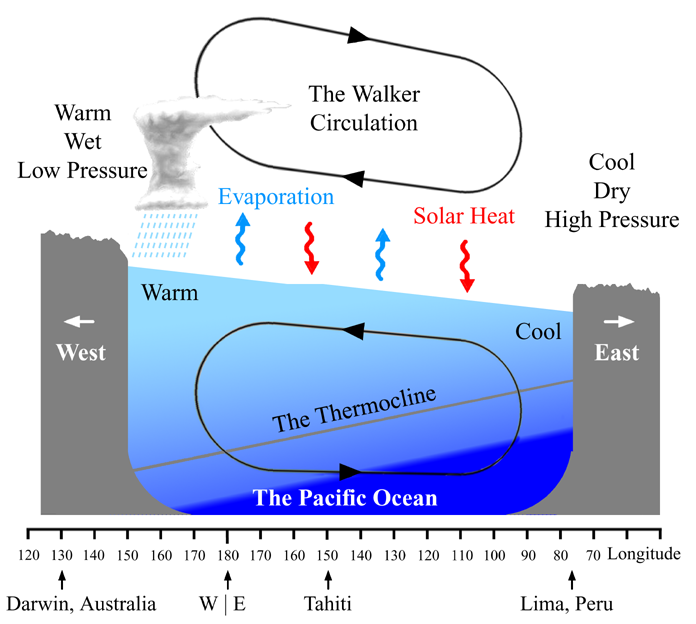Natural swings in the climate have significantly intensified Northern Hemisphere monsoon rainfall, showing that these swings must be taken into account for climate predictions in the coming decades, a new study finds.
Wang and his colleagues, however, found that over the past 30 years, the summer monsoon circulation, as well as the Hadley and Walker circulations, have all substantially intensified. This intensification has resulted in significantly greater global summer monsoon rainfall in the Northern Hemisphere than predicted from greenhouse-gas-induced warming alone: namely a 9.5% increase, compared to the anthropogenic predicted contribution of 2.6% per degree of global warming.
Most of the recent intensification is attributable to a cooling of the eastern Pacific that began in 1998. This cooling is the result of natural long-term swings in ocean surface temperatures, particularly swings in the Interdecadal Pacific Oscillation or mega-El Niño-Southern Oscillation, which has lately been in a mega-La Niña or cool phase. Another natural climate swing, called the Atlantic Multidecadal Oscillation, also contributes to the intensification of monsoon rainfall.
Other Research finds that Global warming could cause frequent and severe failures of the Indian summer monsoon in the next two centuries, new research suggests.
They found that as we move towards the end of the 21st, and into the 22nd, century, increasing temperatures and a change in strength of the Pacific Walker circulation in spring could cause more frequent and severe changes in monsoon rainfall.
These failures of the monsoon system -- defined in the study as a 40 to 70 per cent reduction in rainfall below normal levels -- were unprecedented in the researchers' observational record, which was taken from the India Meteorological Department and goes back to the 1870s.
from
http://www.sciencedaily.com/releases/2013/03/130320155251.htm
http://www.sciencedaily.com/releases/2012/11/121105200054.htm


No comments:
Post a Comment